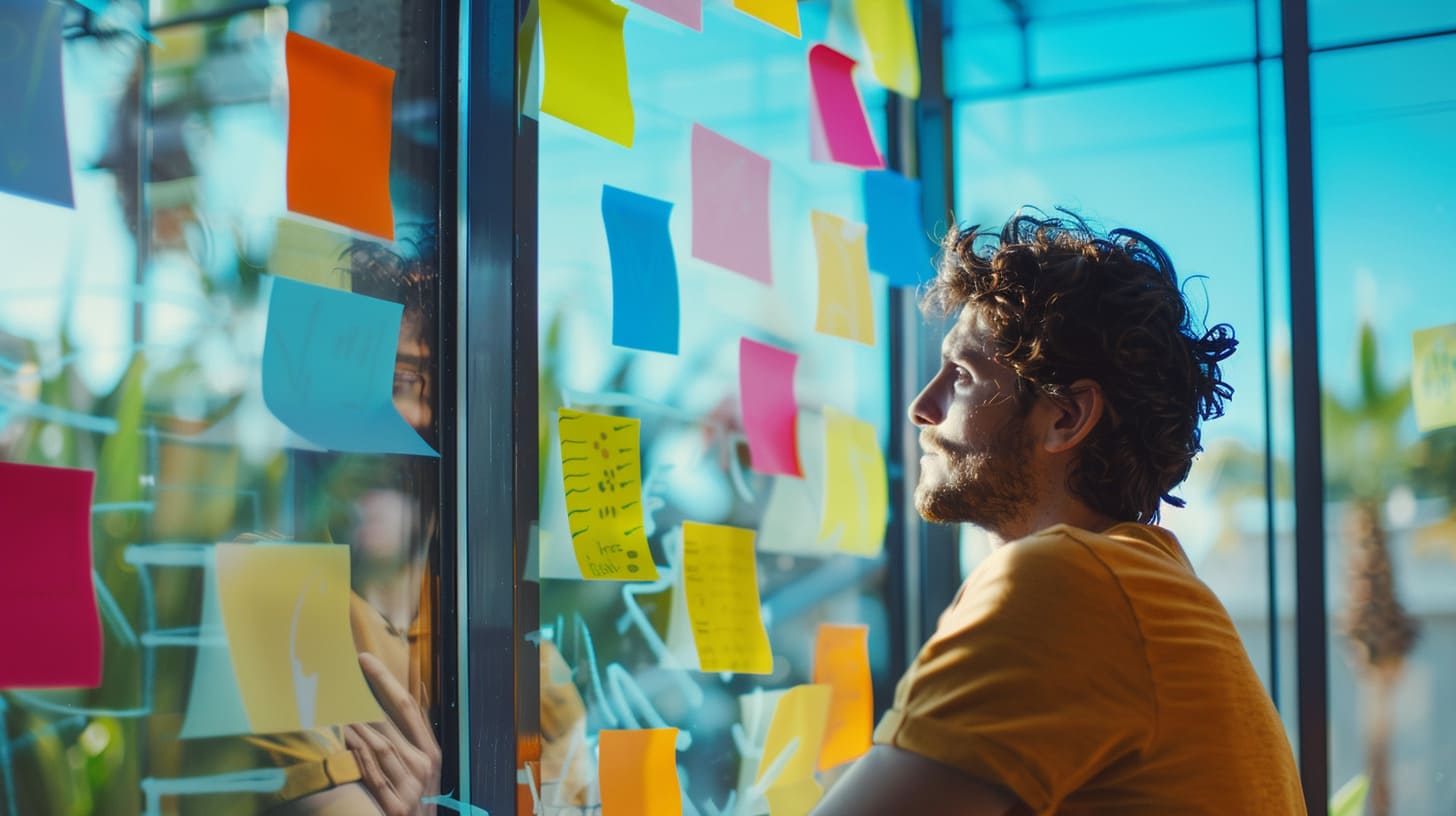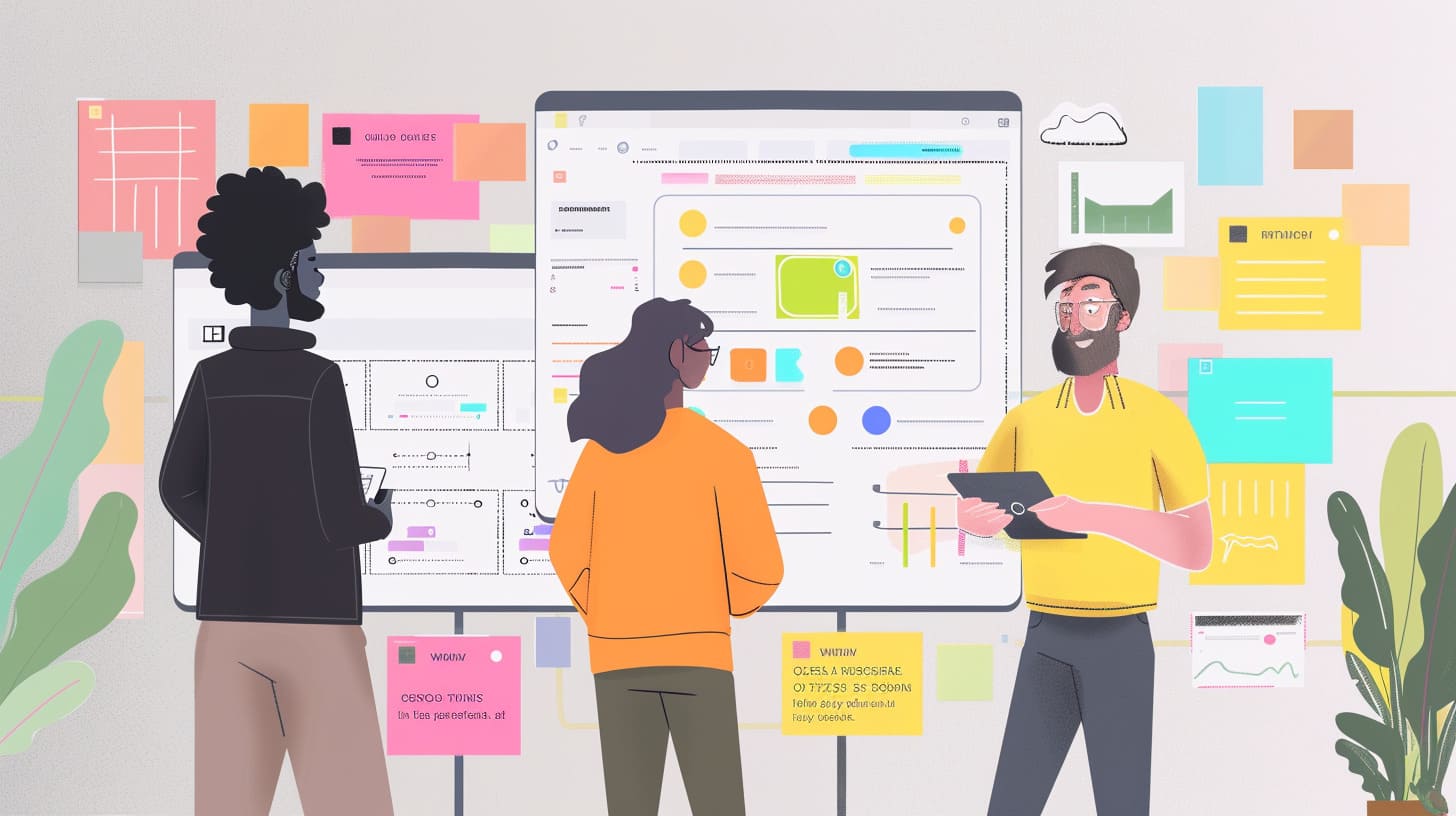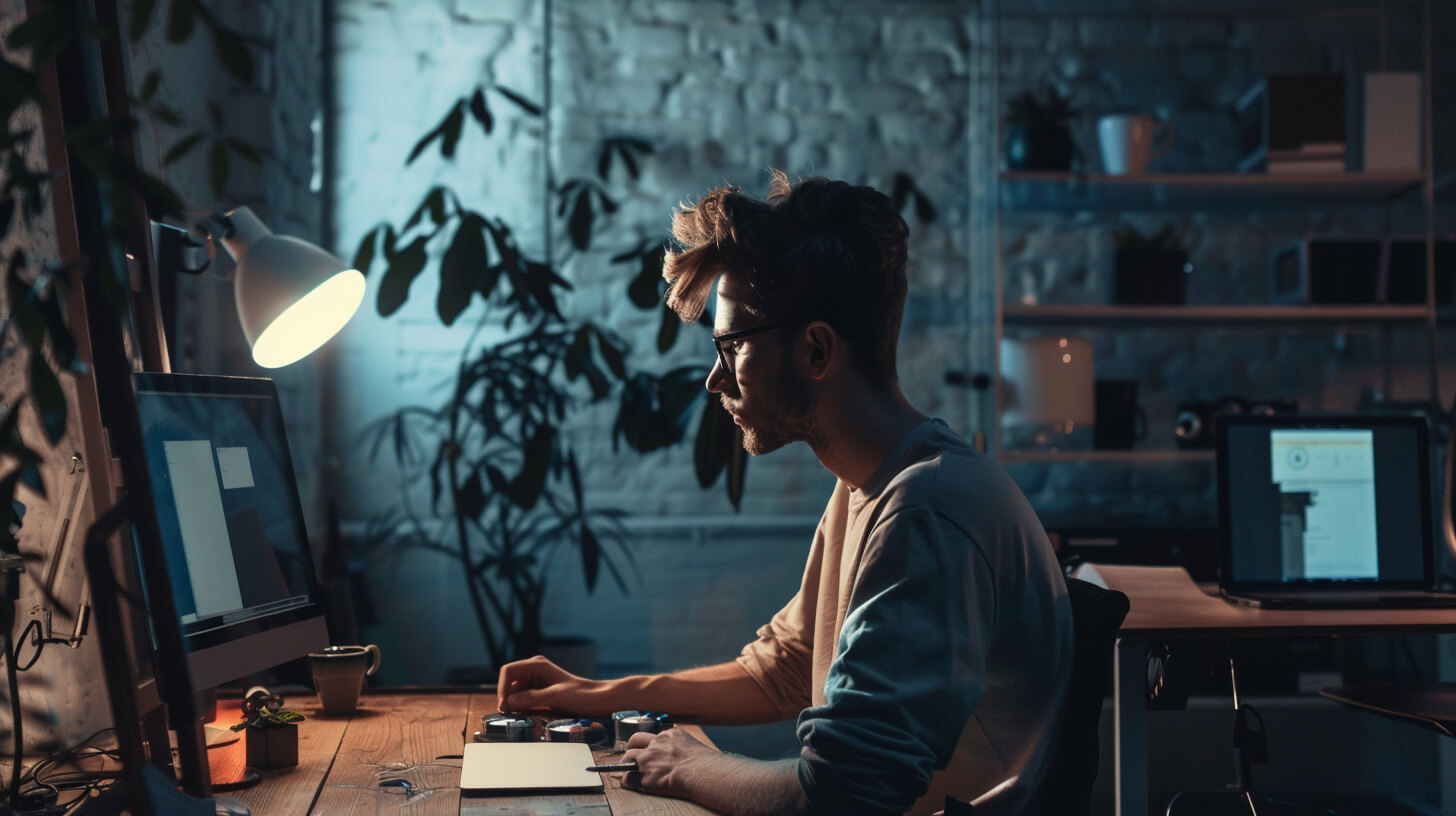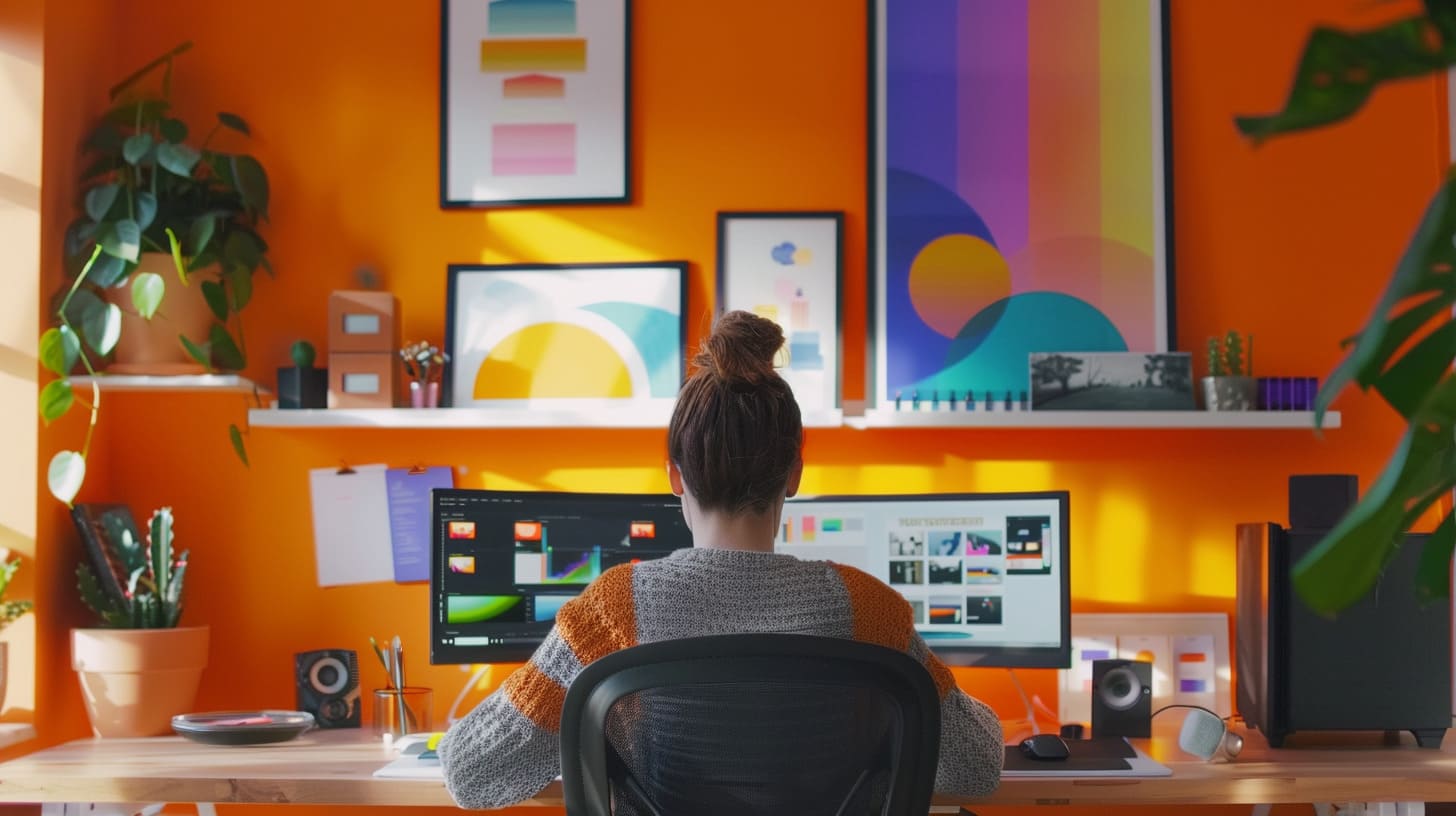Creative block can be a challenging hurdle for any UI designer. It’s that frustrating moment when inspiration seems to dry up, and fresh ideas feel elusive. This common issue can significantly impact your productivity and mental health, creating a cycle of stress and decreased motivation.
Understanding creative block is essential. Research indicates that up to 71% of designers experience creative block, often leading to frustration, anxiety, or even depression. These mental barriers can slow down your design process and sap your enthusiasm.
The good news is that creative blocks are not insurmountable. By recognizing and addressing them, you can regain your creative flow and continue delivering innovative designs. This article will guide you through various strategies to overcome creative block, helping you stay productive and inspired in your UI design journey.
1. Recognize and Embrace the Struggle
Creative blocks are a normal part of the design process. As a UI designer, you’ll face times when inspiration just doesn’t flow. It’s important to recognize that you’re not alone;
77% of designers experience creative blocks, with 45% encountering them frequently.
These blocks can stem from various factors like lack of inspiration, deadline pressures, or fear of criticism. Rather than seeing these hurdles as setbacks, embrace them as part of the creative journey. Understanding that creative blocks are temporary and manageable can help reduce anxiety. This mindset shift allows you to take a step back, reassess, and eventually break through the block with renewed energy and ideas.
2. Warm-Up with Design Exercises
Warming up with design exercises can be a powerful way to overcome creative blocks. Simple activities can stimulate your mind and get your creative juices flowing. Here are some effective exercises to try:
- Freehand Sketching: Start by sketching random shapes, patterns, or doodles without any specific goal in mind. This can help loosen up your thinking and generate new ideas without the pressure of perfection.
- Constraints-Based Exercises: Limit yourself to a specific color palette, font, or layout. For example, try designing a user interface using only three colors or one typeface. Constraints can force you to think creatively and come up with unique solutions.
- Time-Boxing: Set a timer for 15 minutes and challenge yourself to create as many design concepts as you can within that time frame. This can help you break free from overthinking and encourage rapid idea generation.
- Analog Exercises: Step away from the digital screen and engage in non-digital activities like drawing, painting, or collage-making. These activities can help you tap into your creative subconscious and approach problems from a fresh perspective.
- Designing Absurd Scenarios: Create designs for unrealistic or humorous scenarios, such as an app for aliens or a user interface for underwater use. This playful approach can stimulate out-of-the-box thinking and spark innovative ideas.
Incorporating these exercises into your routine can help you overcome creative blocks, boost your design inspiration, and improve your overall design process.
3. Change Your Environment
A change in your environment can significantly boost creativity and help overcome design hurdles. Sometimes, the monotony of the same workspace can stifle your creative juices. Moving to a new location or rearranging your existing space can make a big difference.
Why It Works: Different settings stimulate different parts of your brain. For instance, working in a co-working space can foster collaboration and inspire new ideas through social interaction. However, it can also be distracting, so it’s crucial to find a balance. Outdoor settings, on the other hand, offer natural light and fresh air, which can improve both your mood and creativity.
Steps to Implement:
- Co-Working Spaces: Try spending a few hours in a co-working space. These places often have a mix of private and communal areas to suit different tasks.
- Outdoor Settings: Take your work outside. A park or a café with outdoor seating can be a refreshing change from your usual desk.
- Home Offices: If working from home, consider redesigning your workspace. Incorporate natural elements like plants and ensure you have plenty of natural light.
Trends in Workspace Design:
- Activity-Based Design: Create different zones for different tasks. For example, have a separate area for brainstorming and another for focused work.
- Biophilic Design: Use natural materials and incorporate greenery to create a calming and inspiring environment.
- Flexible Layouts: Use modular furniture that can be rearranged to fit your current needs. This flexibility can encourage creativity and collaboration.
- Wellness-Focused Design: Include elements that promote well-being, such as standing desks or a meditation corner.
Changing your environment isn’t just about physical space; it’s about creating a setting that fosters creativity and productivity. Exploring different surroundings can break the monotony and provide fresh perspectives, helping you tackle creative blocks effectively.
4. Practice Mindfulness to Boost Focus
Mindfulness meditation is a powerful tool to enhance focus and creativity, particularly for UI designers facing creative block. It involves paying attention to the present moment without judgment, which can help clear mental clutter and sharpen your concentration.
Recent studies underscore the benefits of mindfulness meditation. A 2020 study published in the Journal of Cognitive Enhancement found that it improves attentional abilities, including focus and concentration. Another study published in the Journal of Applied Developmental Psychology in 2019 revealed that mindfulness meditation boosts creative problem-solving skills and reduces mind-wandering. These findings highlight the potential of mindfulness to enhance both focus and creativity, crucial for overcoming design hurdles.
Integrating mindfulness into your daily routine doesn’t have to be time-consuming. You can start with a brief 5-10 minute meditation session each morning to set a focused tone for the day. During work hours, take short mindful breaks. Close your eyes, take deep breaths, and allow yourself to reset. These breaks can significantly reduce stress and enhance your design productivity.
Several mindfulness apps can support your practice. Headspace and Calm offer guided sessions tailored for focus and creativity. Insight Timer provides a range of free meditations, while Mindfulness Studio tracks your progress. For those who prefer background music, Focus@Will offers specially designed tracks to aid concentration.
By adopting mindfulness, you can boost your focus, enhance creativity, and maintain a productive, inspired workflow in your UI design projects.
5. Seek Inspiration from Unconventional Sources
Breaking free from a creative block often means stepping outside of your usual sources of inspiration. As a UI designer, looking beyond your immediate field can provide fresh perspectives and ignite your creativity in unexpected ways.
Art is a rich source of inspiration. Consider generative art, which combines creativity with algorithms. Artists like Refik Anadol and Ash Thorp use neural networks to create stunning visuals that can be translated into unique UI designs. The iOS app “Prism,” inspired by Bridget Riley’s optical art, demonstrates how artistic principles can enhance user interfaces.
Music offers a different kind of muse. The concept of “sonification” converts data into sound patterns, providing a sensory experience that can inform UI design. Apps like “SoundScout” visualize data through sound waves, drawing inspiration from musicians like Brian Eno and Tim Hecker. This approach can lead to innovative ways of representing data visually.
Science also has a lot to offer. Biometric data visualization, inspired by researchers like Dr. Nadia Ahmed, integrates scientific principles into design. For instance, the “Moodmetric” app uses biometric data to create interactive emotional visualizations. This not only enhances functionality but also makes designs more engaging and user-centered.
Practical Steps for Integrating Diverse Inspirations
- Daily Inspiration: Follow artists, musicians, and scientists on social media to get a daily dose of creativity.
- Cross-Disciplinary Research: Read books, attend art exhibitions, and listen to science podcasts to broaden your horizons.
- Collaboration: Work with professionals from various fields to gain new insights and ideas.
- Experimentation: Try new tools and techniques, whether it’s coding, sketching, or playing an instrument.
- Reflection and Feedback: Regularly evaluate your design process and seek feedback to continually improve.
By incorporating these strategies into your workflow, you can overcome creative block and bring fresh, innovative ideas to your UI designs.
6. Utilize Modern Techniques and Tools
Design sprints are a powerful method for overcoming creative barriers in UI design. These structured, time-constrained processes help teams rapidly prototype and test ideas. Here are some benefits of using design sprints:
1. Rapid Ideation and Prototyping
Design sprints condense months of work into just a few days. This accelerated timeline forces you to focus on essential elements and avoid overthinking. By quickly moving from idea to prototype, you can test concepts without getting bogged down in details.
2. Cross-Functional Collaboration
Design sprints bring together diverse teams, including product managers, developers, marketers, and designers. This multidisciplinary approach ensures that multiple perspectives are considered, leading to more innovative solutions. The collaboration fosters a holistic view, addressing various aspects of the user experience.
3. Structured Frameworks
Utilizing structured frameworks like the Google Design Sprint can guide your team through each phase, from understanding the problem to testing solutions. These frameworks provide a clear roadmap, making it easier to stay on track and achieve tangible results.
4. Hybrid and Virtual Collaboration
Modern design sprints can be conducted entirely online or in a hybrid format. Tools like Figma, Sketch, and Mural enable real-time collaboration, allowing team members to contribute from anywhere in the world. This flexibility accommodates remote teams and diverse viewpoints, enriching the creative process.
5. AI-Powered Insights
Leveraging AI and machine learning can significantly enhance the design sprint process. AI-driven tools like Adobe Sensei and Ideaflip can generate ideas, automate repetitive tasks, and provide data-driven insights. These capabilities help you overcome creative blocks by offering fresh perspectives and reducing manual workload.
6. Real-World Success Stories
Many organizations have successfully used design sprints to overcome creative hurdles. For example, Airbnb used design sprints to develop its Experiences feature, while Uber redesigned its rider app, resulting in a 15% increase in bookings. These case studies demonstrate how design sprints can lead to innovative and effective UI solutions.
Key Benefits of Design Sprints:
- Rapid Prototyping: Quickly move from idea to prototype.
- Cross-Functional Collaboration: Involve diverse teams for holistic solutions.
- Structured Frameworks: Follow a clear roadmap to stay on track.
- Remote and Hybrid Options: Utilize tools for virtual collaboration.
- AI-Powered Tools: Enhance creativity and efficiency with AI.
Incorporating design sprints into your workflow can dramatically boost your ability to break through creative blocks and deliver effective UI designs.
7. Embrace Imperfection and Iterate
Don’t let the pursuit of perfection paralyze your creativity. Embracing imperfection can be a powerful strategy to overcome creative block. When you focus too much on making a design flawless, you might end up stuck in a loop of revisions and second-guessing. Instead, aim to iterate quickly and refine as you go.
Numerous studies and expert opinions support this approach. For example, Don Norman, a well-known UX expert, emphasizes that design should be about making things better, not perfect. This mindset allows you to move forward and make continuous improvements based on real user feedback. A study by Nielsen Norman Group also found that users value functionality and ease of use over perfection.
Successful UI designers often use iterative design techniques. Take Airbnb’s design team, which employs a “design sprint” approach. They rapidly prototype and test ideas, making it easier to identify what works and what doesn’t. Similarly, Google’s design team releases imperfect designs to gather user feedback, which informs the next steps in their design process.
You can utilize tools like Figma, Sketch, and Adobe XD for rapid prototyping. These tools enable real-time collaboration and allow you to make quick adjustments based on feedback. Agile methodologies like Scrum and Kanban also facilitate rapid prototyping and iteration, emphasizing testing and refinement over getting it right the first time.
Here’s how to start embracing imperfection in your design process:
- Create Rapid Prototypes: Use tools like Figma or Adobe XD to quickly mock up your ideas.
- Gather Feedback Early: Share your prototypes with users or colleagues to get immediate input.
- Iterate Quickly: Make small, incremental changes based on the feedback you receive.
- Focus on Functionality: Ensure your design is usable and functional before worrying about aesthetics.
- Document Your Progress: Keep track of what changes you make and why, to understand what works best.
By focusing on iterative design, you can break free from the pressure of perfection and keep your creative juices flowing.
Conclusion
Overcoming creative block as a UI designer involves embracing the challenge and using effective strategies. By recognizing the struggle, warming up with design exercises, and changing your environment, you can stimulate new ideas. Mindfulness practices help boost focus, while seeking inspiration from unconventional sources broadens your creative horizon. Utilizing modern tools and techniques like design sprints and AI-powered design software can break existing barriers. Embracing imperfection and iterating on designs ensures continuous improvement. Remember, creative blocks are temporary and manageable with the right approach. Implement these strategies to reignite your creativity and maintain productivity in your design work.
Additional Tips and Resources
Finding inspiration and feedback is crucial when trying to overcome creative block. Here are some online design communities that can help you stay inspired and connected:
- Dribbble: This platform is a go-to for UI designers to showcase their work, get feedback, and discover new ideas. Participate in Dribbble Meetups to connect with other designers in person or explore Dribbble Playoffs for community-driven challenges.
- Behance: With a vast community of designers, Behance offers a place to share and discover creative work. Utilize features like Appreciations and Collections to engage with other designers and find fresh inspiration. Enhanced search and filtering options make it easier to find relevant projects.
- Reddit (r/userexperience and r/design): These subreddits are active hubs where UI designers can share their work, get feedback, and discuss various design topics. The community is supportive and provides constructive criticism.
- Figma Community: Built around the Figma design tool, this community allows you to share your work and receive feedback from other designers. It’s a great place to find collaborative opportunities and design resources.
- UX Collective: This community focuses on UX and UI design, providing a platform to share knowledge, ask for feedback, and engage in meaningful discussions.
Explore these communities to gain insights, find inspiration, and get the feedback you need to overcome creative block.
Final Words
Creative blocks are an inevitable part of any design journey, but they are temporary and surmountable. Recognizing these moments as part of the process allows you to tackle them with the right strategies and mindset.
UI designers from companies like Airbnb, Dropbox, and Uber have found success by implementing structured techniques like design systems, sprints, and regular critiques. These strategies have enabled them to break through creative barriers and continue producing innovative work.
Remember, many industry leaders view creative blocks as opportunities for growth. Embrace these moments to develop new skills and explore fresh design approaches. Taking care of yourself by practicing mindfulness and ensuring a balanced lifestyle can also significantly aid in overcoming these hurdles.
By applying effective UI design strategies and utilizing modern tools, you can turn creative blocks into stepping stones for your next big idea. Consistent practice, seeking inspiration from various sources, and maintaining an iterative approach will keep you moving forward.
In essence, creative blocks are just temporary challenges in your creative workflow. With persistence and the right strategies, you can overcome them and continue to produce exceptional UI designs.



